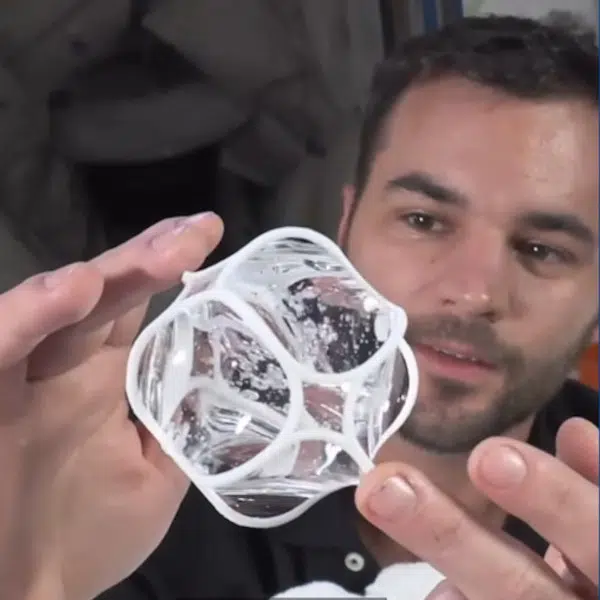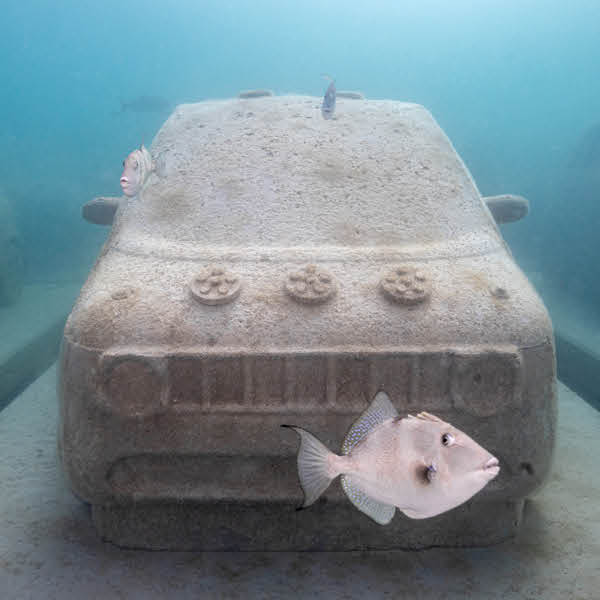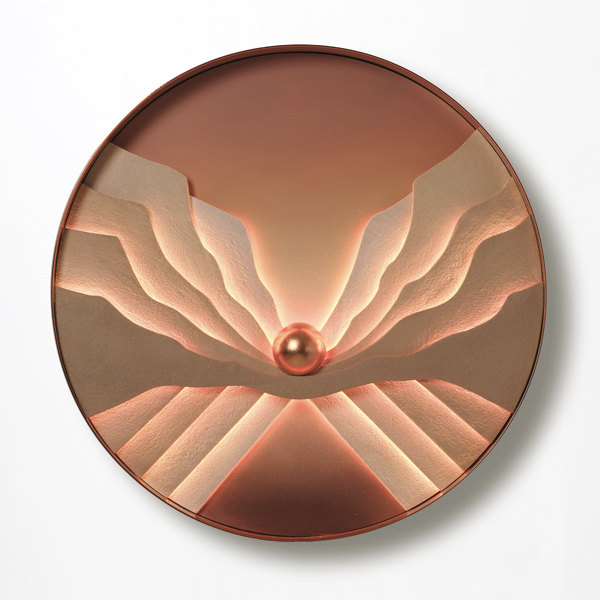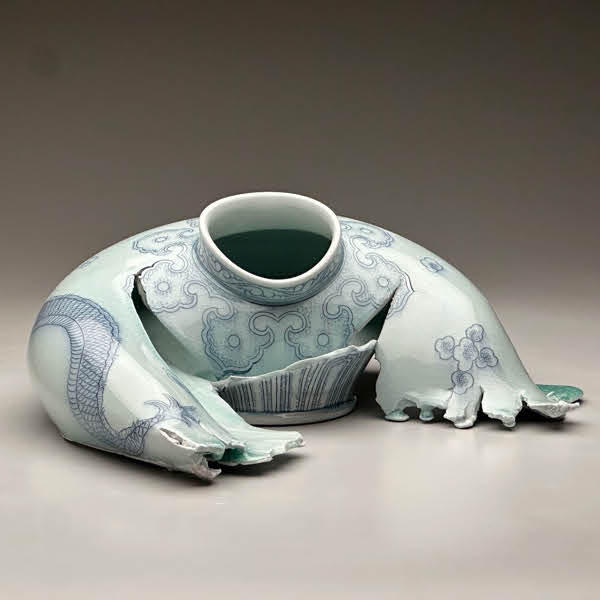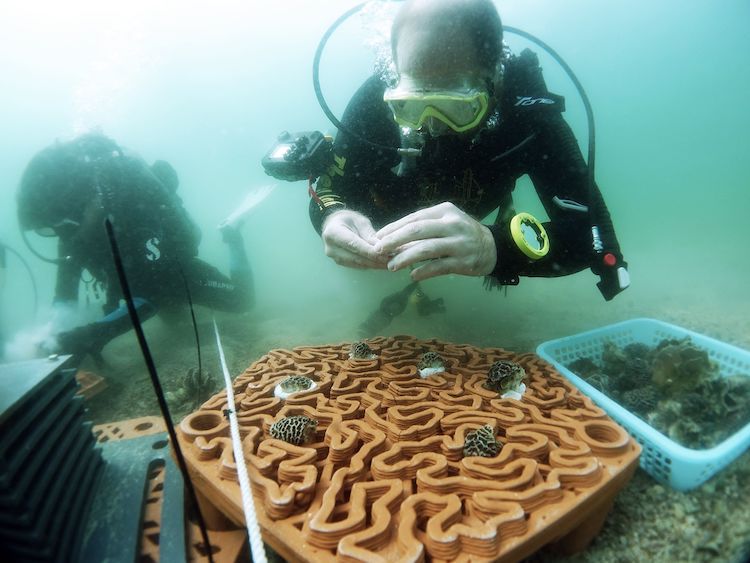
Long-suffering coral reefs may begin to regrow with a promising new technology. The coral population has declined heavily due to red tides, pollution, and increased water traffic in the Double Island area of Sai Kung. For a restoration project commissioned by the Agriculture, Fisheries and Conservation Department (AFCD), marine scientists and architects from the University of Hong Kong (HKU) have co-developed large terra cotta tiles to provide appealing habitats for new coral growth and for the many species which depend on the coral for a home.
About two feet in diameter, the 128 hexagonal tiles form an interlocking grid spanning 430 square feet of ocean floor across three distinct sites. Each tile has a wrinkly structure that looks like a human brain and provides many cervices for coral to take root. Scientists believe the clay material will help fragile coral grasp the surface.
The tiles are made by 3D printing with terra cotta clay and firing the tiles at extremely high heat. (Terra cotta is an ancient form of porous fired-clay pottery.) This fusion of ancient material and modern method allows for the unique “squiggly” design and porous, textured surface of the tile. Scientists believe both factors will make the tiles an ideal habitat for coral regrowth.
Placing the tiles this summer, the marine experts at Swire Institute of Marine Science (SWIMS) at HKU will observe coral growth over the next two years. Collaborating with the Robotic Fabrication Lab of the Faculty of Architecture, the scientists intend to extend their experimentation by creating a variety of tile designs through 3D printing. In this way the tiles can be designed to fit with the needs of a specific marine environment. Terra cotta tiles are a promising eco-friendly method to help revive and replace the coral reefs which are critical to ocean ecologies.
Marine scientists and architects at the Swire Institute of Marine Science have designed terra cotta tiles to encourage coral reef growth.
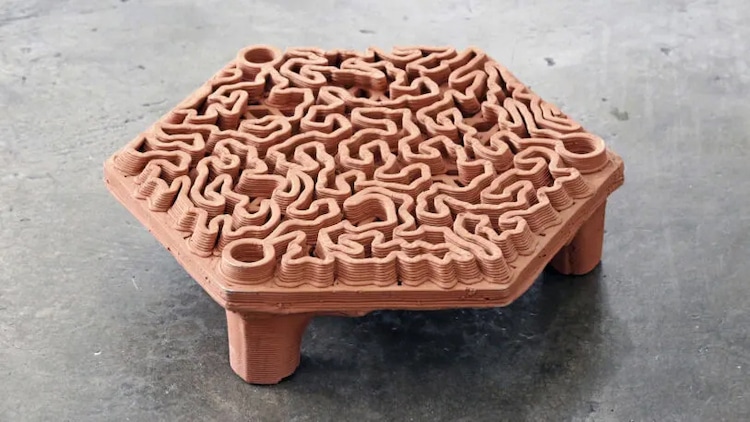

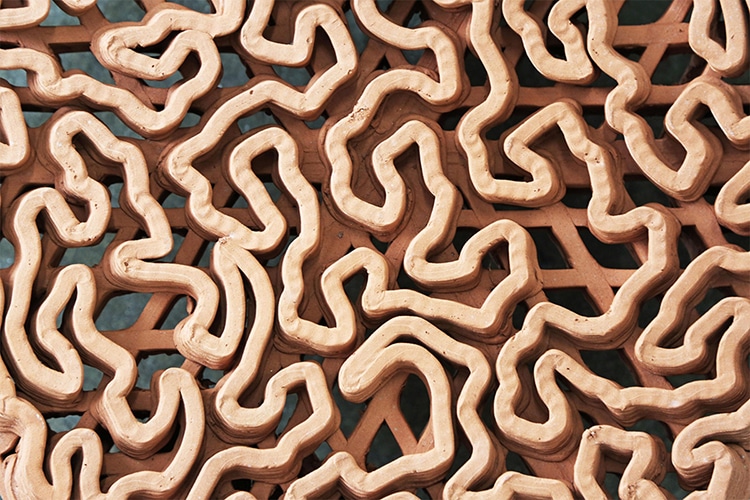
Photo: Christian J. Lange/HKU
The terra cotta coral reef tiles are 3D printed to create many crevices for coral.

Photo: Christian J. Lange/HKU
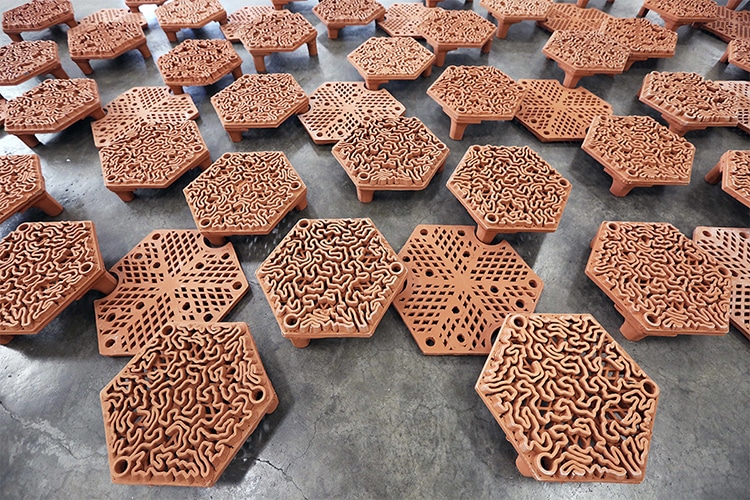
Photo: Christian J. Lange/HKU

Photo: Christian J. Lange/HKU
The tiles cover 430 square feet of ocean floor.
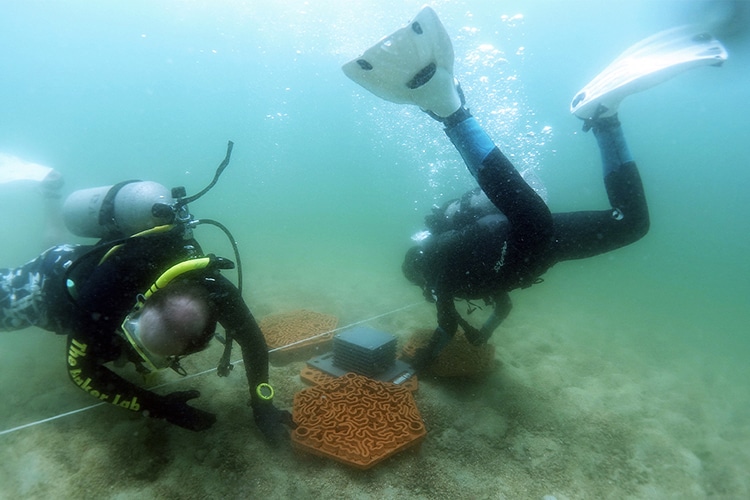
Scientists hope the tiles will help reverse a significant loss of coral reef at Double Island.
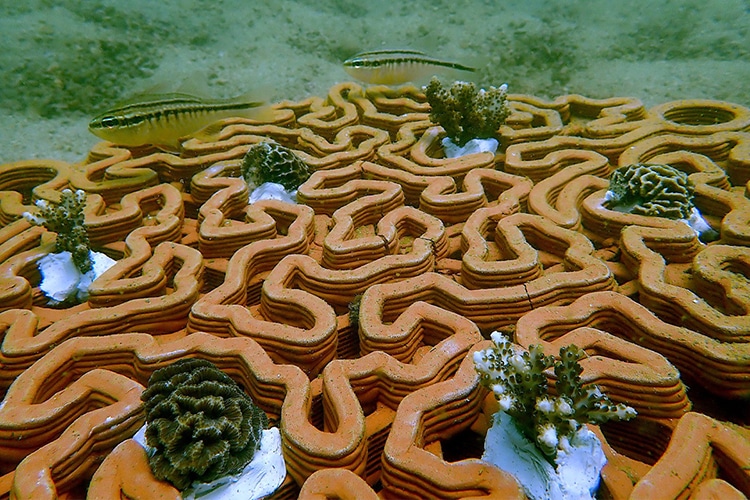
HKU: Website | Facebook
AFCD: Website | Facebook
SWIMS: Website | Facebook
h/t: [Fast Company]
All images via HKU, AFCD, and SWIMS.
Related Articles:
Pantone Unveils Three New Color Tones Based on How Coral React to Climate Change
Embroidered and Embellished Coral Sculptures Creatively Promote Ocean Conservation
Futuristic Underwater Hotel Will Use Profits to Protect Coral Reefs
Volvo Installs 3D-Printed “Living Seawall” in Sydney Harbour to Combat Plastic Pollution











































































